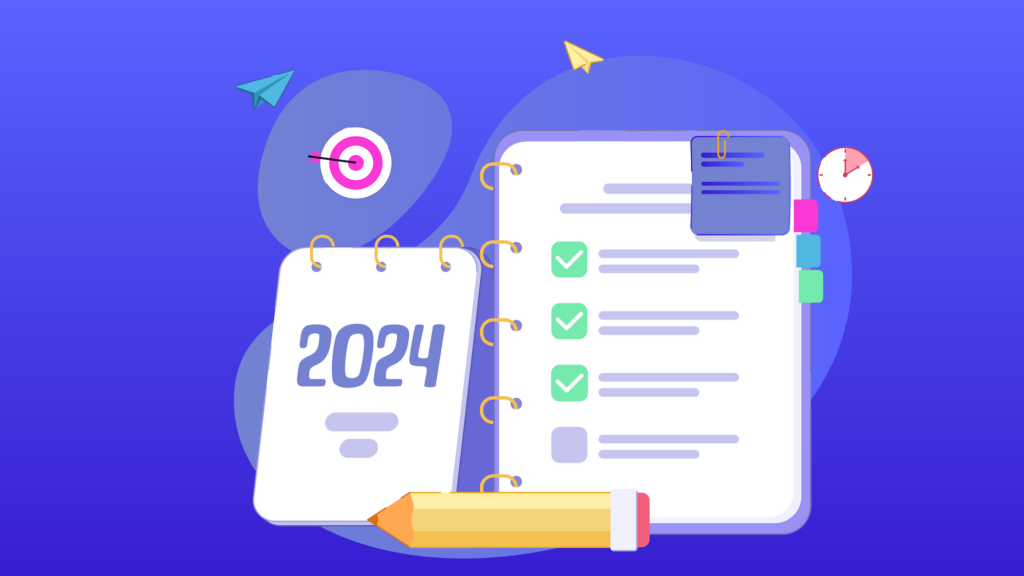
Mega Backdoor Roth Solo 401(k)
The Mega Backdoor Roth strategy is the only strategy that will allow a self-employed individual or small business owner with no employees to contribute up to $70,000 (or $77,500 if age 50+) in 2025 in a Roth and potentially get immediate access to the cash.
The Mega Backdoor Roth Solo 401(k) Strategy
The Mega Backdoor Roth Solo 401(k) is a powerful strategy that will allow you to maximize contributions to your Solo 401(k) plan. By using the Mega Backdoor Roth Solo 401(k) strategy, you can save more for retirement! In this article, we will discuss what is a Mega Backdoor Roth Solo 401(k) and how you can use this strategy to maximize retirement savings!
Key Points
- The Mega Backdoor Roth allows one to supercharge his or her tax-free retirement
- The Roth Solo 401(k) allows for qualified tax-free withdrawals
- The Solo 401(k) is the best retirement plan for the self-employed allowing individuals the ability to save more for retirement.
Solo 401(k) Eligibility
The Solo 401(k) is like a traditional 401(k) Plan. The only difference is it covers one employee and/or a spouse. The Solo 401(k) has instantly become the number one retirement plan for self-employed and small business owners. To become Solo 401(k) eligible, one must not have any employees who work over 1000 hours and are non-owners. So long as the business does not have any non-owner, full-time employees, the owner(s) and spouse(s) can establish a Solo 401(k) plan for the business.
Solo 401(k) Plan Contribution Rules
Internal Revenue Code (IRC) Section 402(g) imposes a per individual limit of $23,500 or $31,000 for individuals at least age 50 for employee deferral contributions in 2025 Employee deferral contributions can be made in pretax or Roth, if the plan document permits. Employee deferral contributions are made dollar for dollar and are not based on a percentage of income. Whereas employer profit sharing contributions can be made to the plan in an amount up to 25% of the participant’s self-employment compensation (20% in the case of a sole proprietorship or single member LLC). Employer profit sharing contributions must be made in pretax. Pursuant to IRC 415, the aggregate limit for employee and employer contributions cannot exceed $70,000 or $77,500 if at least 50 for 2025.
For example, a self-employed individual under the age of 50 who makes $70,000 of income would be able to contribute $23,000 as an employee deferral, in pretax or Roth, and 20% of his or her compensation or $14,000 as a pretax employer profit sharing contribution, providing him or her with an aggregate plan contribution of $37,500.
What if I told you that you can contribute over $60,000 with just over $70,000 of income AND it all can be Roth? Welcome to the Mega Backdoor Roth Solo 401(k) strategy.
After-Tax Contributions
After-tax contributions are not considered pretax or Roth. After-tax contributions are not tax deductible and the earnings are subject to tax. Hence, not a very popular choice for retirement investors when compared to a pretax or Roth option. However, in the Mega Backdoor Roth 401(k) strategy, after-tax contributions play a very important role.
The benefit of making after-tax contributions and using the strategy versus a typical mixture of employee deferral and profit sharing contribution is that one can make a dollar for dollar contribution up to the annual limit, versus an employee deferral, plus a profit sharing contribution, which is based off a percentage of your compensation (20% or 25%).
In other words, one can reach the maximum plan contribution limits with less income with the Mega Backdoor Roth strategy. Unfortunately, not all Solo 401(k) plans allow for after-tax contributions
Learn More: Importance of Investment Diversity


Mega Backdoor Roth Solo 401(k) Strategy
The Mega Backdoor Roth 401(k) option can generally only be used by Solo 401(k) plans. The reason for this is that a Solo 401(k) plan is not subject to ERISA testing. Whereas in a 401(k) plan with non-owner employees, such as Tesla, unless enough rank-and-file employees selected to do a Mega Backdoor Roth contribution, which rarely happens, the structure would not be allowed.
In other words, as a result of the ERISA testing, specifically the top heavy and ACP test (Actual Contribution Percentage), if too many highly compensated employees elect to Mega Backdoor Roth contributions in relation to rank-and-file employees, the plan would fail the ERISA test and the contribution would be disallowed. Hence, this is why is its very rare for companies with employees to offer Mega Backdoor Roth options to their employees. Accordingly, the structure is another reason why the Solo 401(k) plan is the best and most popular retirement plan for the self-employed or small business owner with no full-time employees.
The Birth of the Mega Backdoor Roth 401(k)
Prior to IRS Notice 2014-54, doing a Mega Backdoor Roth was not as attractive as there was some uncertainty as to how the after-tax 401(k) funds can be rolled over to a Roth IRA. Notice 2014-54 clarified this rule and allowed the pretax and after-tax funds that were distributed from a plan on a pro-rated basis to be separated once a distribution is made.
Therefore, the Notice opened the door to the Mega Backdoor Roth 401(k) strategy. Under the strategy, one can maximize his or her 401(k) plan Roth contributions as well as gain investment options through flexible rollover rules. Essentially, a plan participant can contribute after-tax funds to a 401(k), immediately roll those funds to an IRA, and then convert them to a Roth IRA without tax. Even better, the individual can gain investment options through a Roth IRA and even gain the ability to use those funds immediately without being over the age of 59 1/2 or satisfying the Roth five-year rule.
In general, in order to take funds out of a Roth IRA tax-free, the distribution must be deemed a qualified distribution. A qualified distribution is when the Roth IRA has been opened at least five years and the Roth IRA owner is over the age of 59 1/2. The five-year clock starts with your first contribution to any Roth IRA. If you satisfy the distribution rules, withdrawals of contributions and earnings will be tax-free. However, contributions to a Roth IRA can always be taken anytime as a tax-free distribution. Note, the five-year rule for a 401(k) plan is counted separately from the five-year rule for any/all Roth IRAs.

Procedures for Doing a Mega Backdoor Roth Solo 401(k)
When doing a Mega Backdoor Roth solution, the after-tax contributions are made to the Solo 401(k) plan by the employee. We suggest opening a separate bank account for the after-tax funds. Immediately thereafter, the after-tax funds would be rolled into a Roth bank account under the plan. Again, for simplicity purposes, we suggest opening a separate Roth bank account. Hence, a plan doing a Mega Backdoor Roth would typically have three bank accounts under the plan: pretax, after-tax, and Roth. This is not required, but based on our experience, highly recommended.

Mega Backdoor Roth Solo 401(k) Strategy
Under the strategy, a Solo 401(k) plan participant can make after-tax contributions up to the annual maximum contribution. He or she must have sufficient earned income (Schedule C net income or W-2) to make the after-tax contribution. One cannot contribute to a plan more than they earn, so it is important that the plan participant only contribute what he or she is allowed. For example, if a plan participant made net $50,000 on her Schedule C, the after-tax contributions could not exceed that amount. Note – you may not be able to contribute the entire amount earned as income because the contribution must be net of social security and Medicare taxes.
Assuming the plan participant had $70,000 of net Schedule C income, he would be able to do an after-tax contribution of around $64,000 in 2025, when taking into account social security & FICA taxes. The plan participant would then immediately roll the after-tax funds to an after-tax Solo 401(k) account and then immediately convert the funds to a Roth 401(k).
After-tax contributions are not considered employee deferral or employer profit sharing contributions and are, thus, not subject to the 401(k) plan triggering rules. The plan triggering rules essentially restrict a plan participant from rolling over 401(k) plan funds to an IRA or another plan or taking a distribution, except for certain hardship exceptions, until they reach the age of 59 1/2, their job is terminated, or the plan is terminated. Once the after-tax 401(k) funds are converted tax-free to the Roth Solo 401(k), the funds could then be rolled into a Roth IRA, even if the plan participant is under the age of 59 1/2.
In the case of a Mega Backdoor Roth strategy, once the after-tax funds are converted to Roth, they can actually be taken as a distribution without satisfying the five-year rule since the conversion came from after-tax funds. Whereas if the converted funds came from earnings, the five-year rule would apply, even to a distribution on the converted amount, unless the individual was over the age of 59 1/2. Note – the five-year rule and over 59 1/2 requirement would apply to a distribution on the earnings from the amount converted.
Deadline for making a “Mega Backdoor” Roth Contribution
The deadline for making a Mega Backdoor Roth contribution is the date the adopting employer files its tax return, including extensions. Because the contribution is after-tax funds, it does not impact the individual’s federal income tax return (IRS Form 1040). In fact, you can even set-up a plan immediately prior to the adopting employer filing their tax return and take advantage of the backdoor.
For example, one can set-up a plan on October 14, 2025 and make a contribution for the 2024 taxable year, so long as the adopting employer filed for a filing tax extension.

Conclusion
The Mega Backdoor Roth Solo 401(k) strategy is a great way for maximizing ones Roth contributions and gaining investment control, or even personal use of the funds through a Roth IRA. Not all Solo 401(k) plans include the Mega Backdoor Roth option. For example, a Solo 401(k) plan offered by a brokerage firm will typically not include the option. IRA Financial is one of the few Solo 401(k) plan providers that allows for this amazing tax planning tool.
Below is a summary of how the mega backdoor Roth strategy works:
-
Establish a Solo 401(k) plan.
Must be self-employed or have a small business with no full-time employees. Also, must confirm that the plan allows for after-tax contributions.
-
Make after-tax contributions.
To the Solo 401(k) plan up to $70,000 ($77,500 if at least age 50) in 2025. Contributions can be made dollar-for dollar. Just make sure you have sufficient earned income (Schedule C or W-2). Passive income, such as rental income, capital gains, interest is not eligible for plan contributions.
-
Convert.
The after-tax 401(k) funds in the plan to a Roth 401(k) account. Since the conversion involves after-tax funds, there would be no tax on the conversion to Roth in the plan.
-
Establish a Roth IRA.
Thanks to IRS Notice 2014-54, no 401(k) plan triggering event is required for the rollover of the Roth 401(k) funds to a Roth IRA tax free.
-
After-tax funds are now in a Roth IRA.
And can be invested or distributed without tax.
The Mega Backdoor Roth Solo 401(k) is not widely known but should be. It can help Roth lovers supercharge their Roth accounts and at the same time provide greater investment and distribution options.
To learn more, please contact a Solo 401(k) plan specialist at 800-472-0646.







